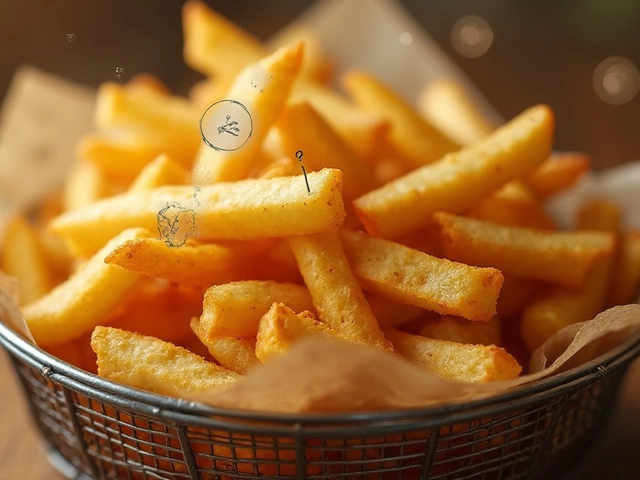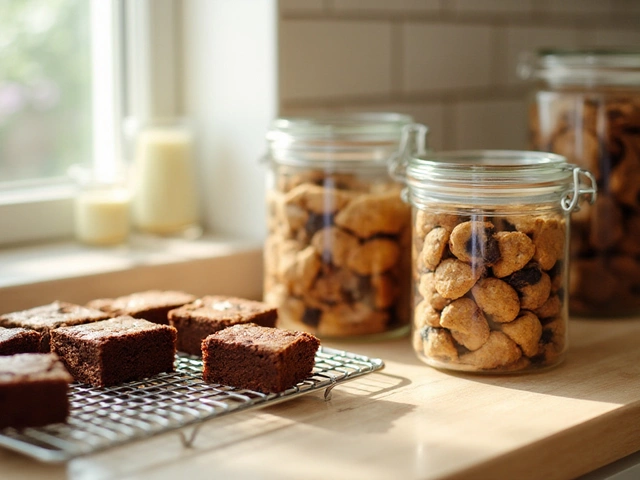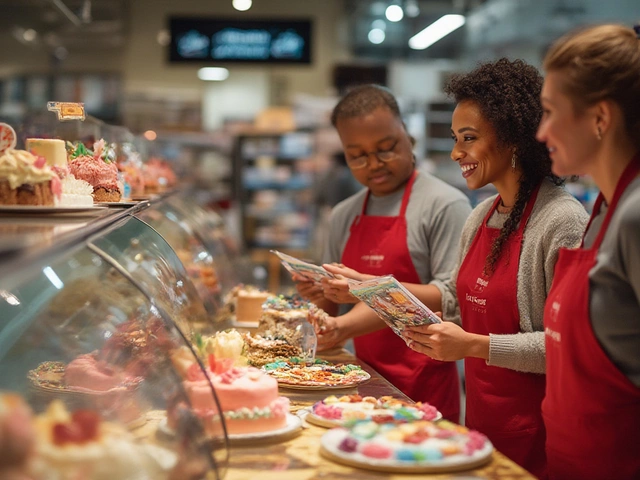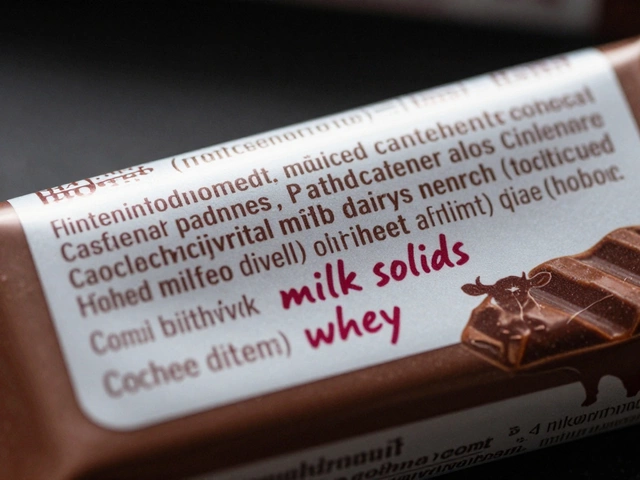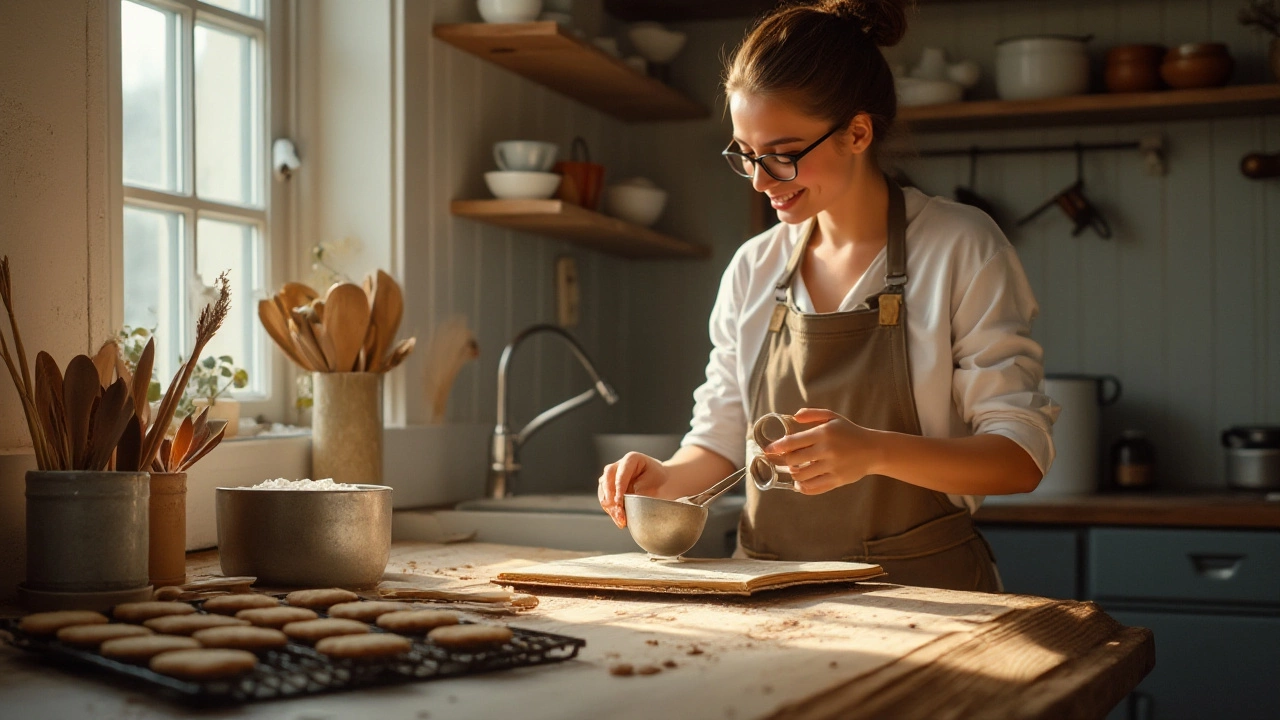
Baking cookies is a cherished tradition that fills kitchens with warmth and delight. But what's the key to creating those utterly scrumptious cookies that have everyone reaching for more? While recipes are abundant, the true secret lies in understanding the craft behind each element that composes the cookie itself.
From selecting the right type of flour to precise baking times, the art of cookie-making encompasses a delicate balance. This article will guide you through crucial techniques and seasoned insights that turn cookie amateurs into cookie maestros.
Whether you're a novice looking to tackle your first batch or a seasoned baker aiming to hone your skills, read on to discover how to bake cookies that blend texture, taste, and a pinch of love.
- The Role of Key Ingredients
- Mastering Your Baking Techniques
- The Importance of Dough Chilling
- Common Mistakes and How to Avoid Them
- Experimenting with Flavors and Textures
The Role of Key Ingredients
Embarking on the journey of baking the ideal homemade cookies begins with understanding the role each ingredient plays in the recipe. The essence of a perfect cookie involves balancing flour, sugar, fats, and leavening agents to create that heavenly bite. Let’s delve into why choosing high-quality and precise measurements matter.
The foundation of most cookies, flour, can transform a cookie's texture completely. All-purpose flour is typically used, but a keen baker might consider bread or pastry flours for variations in chewiness or tenderness. Too much flour can result in a dry cookie, while too little might lead to a flat, crispy texture. Sugar is not only a sweetener but a browning agent as well. The ratio of white sugar to brown sugar will affect both the flavor and texture—brown sugar introduces a molasses-like taste and a chew, while white sugar helps crisp the edges.
Butter vs. Shortening: The Great Debate
The choice between butter and shortening is more than just personal preference. Butter, rich in flavor, melts at a lower temperature, spreading quickly and creating a flatter cookie. Meanwhile, shortening will provide a higher yield of fluffiness due to its ability to hold its shape at higher temperatures. Some bakers opt for a mix of both to capture the best of both worlds in their cookie recipes.
Eggs serve as binders, and the yolks add to the richness, while the whites contribute to the cookie’s structure. An extra egg yolk can lend a nearly decadent richness, transforming a good batch into a stellar one. The leavening agents, either baking soda or baking powder, help the cookies rise and create a delightful texture— too much can lead to a cakey product, while too little may make the cookie tough.
"A great cookie is not just about the ingredients you see. It's about what you can't see— the reaction behind each blend," says culinary expert and baker, Dorie Greenspan.
Adding a pinch of salt not only enhances flavors but provides a contrast that highlights the cookie’s sweetness. Salted butter may not require extra salt, but most precise recipes account for these nuances. These ingredients weave together to create cookies that are more than food; they are experiences waiting to be shared.
| Ingredient | Impact on Cookies |
|---|---|
| Flour | Affects chewiness and structure |
| Sugar | Sweets and browns; ratio affects texture |
| Butter | Flavorful; spreads easily |
| Shortening | Holds shape; leads to fluffiness |
| Eggs | Bind; yolks enrich |
| Salt | Enhances flavor |
Mastering Your Baking Techniques
When it comes to baking homemade cookies, the importance of mastering your technique cannot be overstated. It's not just following the recipe word for word; it's about understanding the science and art embedded within the process. Let's start with a simple yet highly effective method: the creaming technique. This involves beating your butter and sugar until the mixture becomes light and fluffy. This step is crucial because it incorporates air into the dough, giving your cookies a tender texture. The length of time you spend on this step can make all the difference, as over or under-creaming can lead to unexpected cookie outcomes.
For many bakers, one of the hardest parts to perfect is achieving that immaculate texture that falls somewhere between chewy and crispy. The answer often lies in your oven temperature. A key trick is to invest in an oven thermometer, a tool that can accurately convey the internal temp of your oven versus what the dial claims. Preheating your oven correctly is another vital component. An ill-heated oven can cause the butter to melt too quickly, creating flat, overly crispy cookies, while an oven that's too cool could result in soft and underbaked results. Now, wouldn't you agree that's worth the investment? As Julia Child once said,
“The art of bread making can become a way of life.”Substituting 'bread' for 'cookies,' we capture the same sentiment.
An often-overlooked aspect of cookie recipes is the chilling of the dough. Patience is key here and for good reason. Chilling the dough solidifies the fat, preventing the cookie from spreading out thin and wide. When baking time arrives post-chill, your cookies will retain a firm structure. If a cookie dough recipe suggests refrigeration, abide by it wholeheartedly—it can be the ticket to chewy, flavorful bliss. Also, by chilling the dough, you allow flavors to meld and mature, leading to a richer, more developed taste profile.
Now let's delve into handling dry ingredients because sifting isn’t just for show. It helps distribute the leavening agents such as baking soda or baking powder throughout the flour efficiently, which then promotes an even rise in your cookies. Additionally, it prevents ingredient clumping and creates a smoother dough—a step you truly shouldn't skip if looking to make the perfect batch. Experiment with baking times by considering a trial batch, potentially adding or subtracting a minute or two, because every oven performs differently. Adjustments like these can be what turn good cookies into spectacular cookies.
When it’s time for the bake, placement on the baking sheet matters. Overcrowding leads to uneven cooking, sometimes causing cookies to merge together into one large unintended batch! Use parchment paper or silicone baking mats for the best results, as they aid in even baking and effortless cleanup. As a final note, ensure a cooling period post-baking. Yes, they smell delicious and the temptation to scoop them up as soon as they're out is overwhelming. However, waiting gives them time to firm up and complete the baking process on the residual heat. This patience will reward you with that perfect first decadent bite.
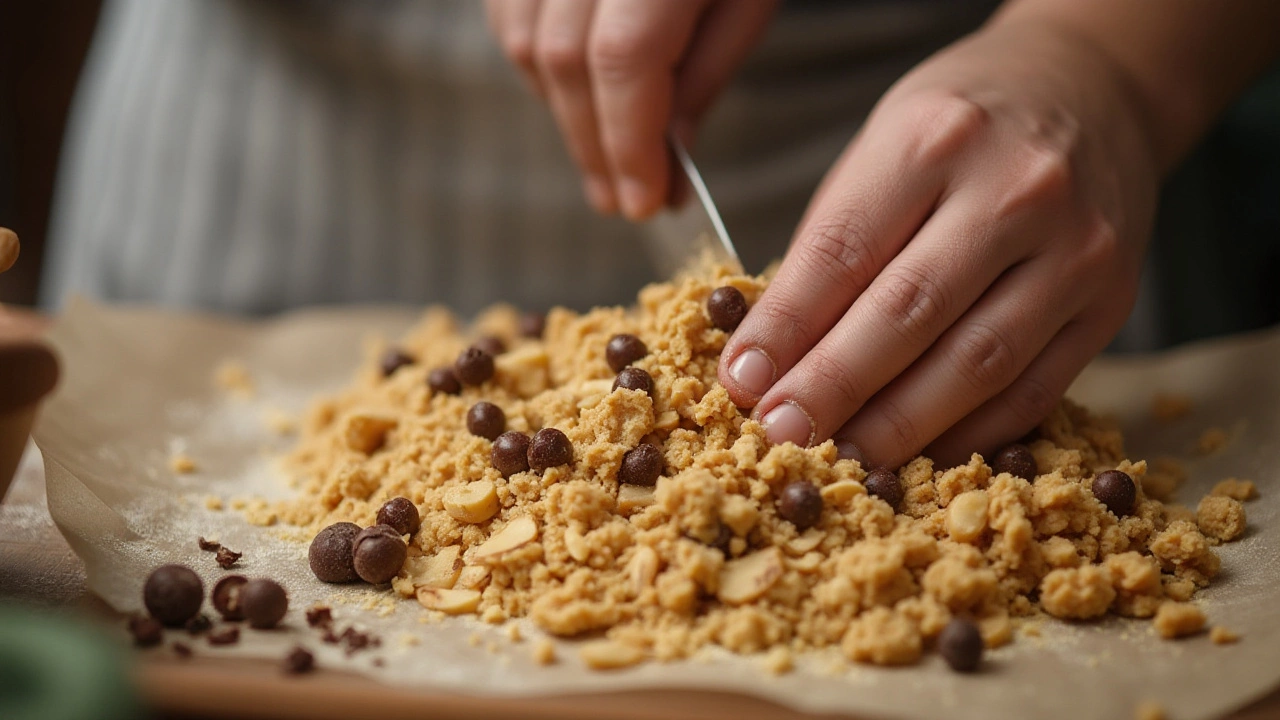
The Importance of Dough Chilling
When it comes to crafting the perfect batch of homemade cookies, the process of dough chilling often plays a pivotal role. You may wonder why this step is emphasized in many cookie recipes, and the reasons are rooted in both science and tradition. Chilling cookie dough allows the fats, typically butter, to firm up, which prevents the cookies from spreading too much during baking. As the fats cool, they remain more solid in the initial baking stages, resulting in thicker, puffier cookies with a delightful texture. As a result, this step can be especially crucial when you desire a chewier cookie rather than a flat, crispy one.
In addition to controlling spread, chilling the dough can also enhance the flavors of your cookies. During the chilling period, there's a process called 'flavour maturation,' analogous to letting a stew sit overnight. This allows all the components within the dough to meld together, leading to a deeper, more developed taste upon baking. As the dough rests, it gradually absorbs moisture from the eggs, and the flour has a chance to hydrate fully, which helps to enhance its flavor profile. Not only that, but recipes often benefit from a long chill time, with some bakers opting to leave their dough in the refrigerator for up to 72 hours.
Renowned pastry chef Dorie Greenspan once mentioned the impact chilling has, saying,
"There’s something magical about allowing a dough to chill overnight, it develops character that’s hard to match with a straight bake."Keeping your cookie baking tips in mind, the transformation of the raw cookie dough is more than just a structural benefit; it becomes a complex system of sugar and flour interactions, creating a more appealing and nuanced cookie taste and texture.
Besides taste, chilling also allows for easier handling. When the dough is stiffened by the cold, it becomes less sticky and easier to scoop, roll, shape, or cut. This is particularly advantageous when working with intricate cookie shapes or when precision is needed, such as in creating uniform-sized cookies for consistently even baking. It's worth noting that cookie recipes that do not mention chilling might still benefit from an hour or two in the fridge to allow the same effects to occur, although with tempered results.
In conclusion, respecting the dough’s resting time, whether your aim is achieving a perfect cookie appearance, a chewy texture, or deep flavor, acts as one of the smallest yet impactful secrets in cookie baking. By making dough chilling a non-negotiable step in your cookie recipes, you're sure to enjoy an end-product that easily captures—and pleases—the taste buds.
Common Mistakes and How to Avoid Them
Baking homemade cookies can seem daunting with the plethora of potential pitfalls. However, understanding these common issues can considerably enhance your baking success. One frequent mistake is not measuring ingredients precisely. Baking is a science, and each component plays a critical role in texture and flavor. An overly packed cup of flour can result in dry and hard cookies, while not enough flour leads to cookies that spread too much and become thin and crisp. Use a digital scale if possible, or ensure that you're using the right measuring cups for dry and wet ingredients, leveling off the extra with a knife.
Another significant error is overmixing the dough. When you mix too vigorously, you activate too much gluten, making cookies tough rather than soft and chewy. Mix just until the ingredients are incorporated. Similarly, failing to chill your dough can be a misstep especially for doughs with high fat content. Chilling the dough allows the fats to solidify, controls spreading, and enhances flavor development—sometimes yielding cookies that are chewy on the inside with a crispy edge.
“Cookies are the sweetest little bit of comfort food. They are very bite-sized and personal.” – Sandra Lee
Oven temperature is another critical factor that often leads to baking mishaps. Ensuring your oven is preheated and using an oven thermometer to verify its accuracy can save you from underbaking or burning your batches. Recognize that the listed baking times are guidelines. Cookies should be slightly undercooked when you pull them out, as they will continue to cook on the hot baking sheet.
In the quest for the perfect batch, storage post-bake is as important as the baking itself. Storing warm cookies improperly can turn them from crunchy to soggy due to excess moisture. Let your cookies cool completely on a wire rack before transferring them to airtight containers lined with parchment paper to retain their intended texture without stickiness. Avoid storing different types together to prevent flavor and moisture crossover.
Don't forget that tasting as you go might alter your perception of the final result. Taste the dough before finalizing the seasoning, particularly if using unsalted butter. When experimenting with different spices or extracts, do so with a light hand to avoid overpowering the primary flavors of your cookies. Lastly, always keep note of what worked and what didn’t. Perfect cookies often result from iterative refinements, allowing you to adjust subtly to your specific preferences and conditions.
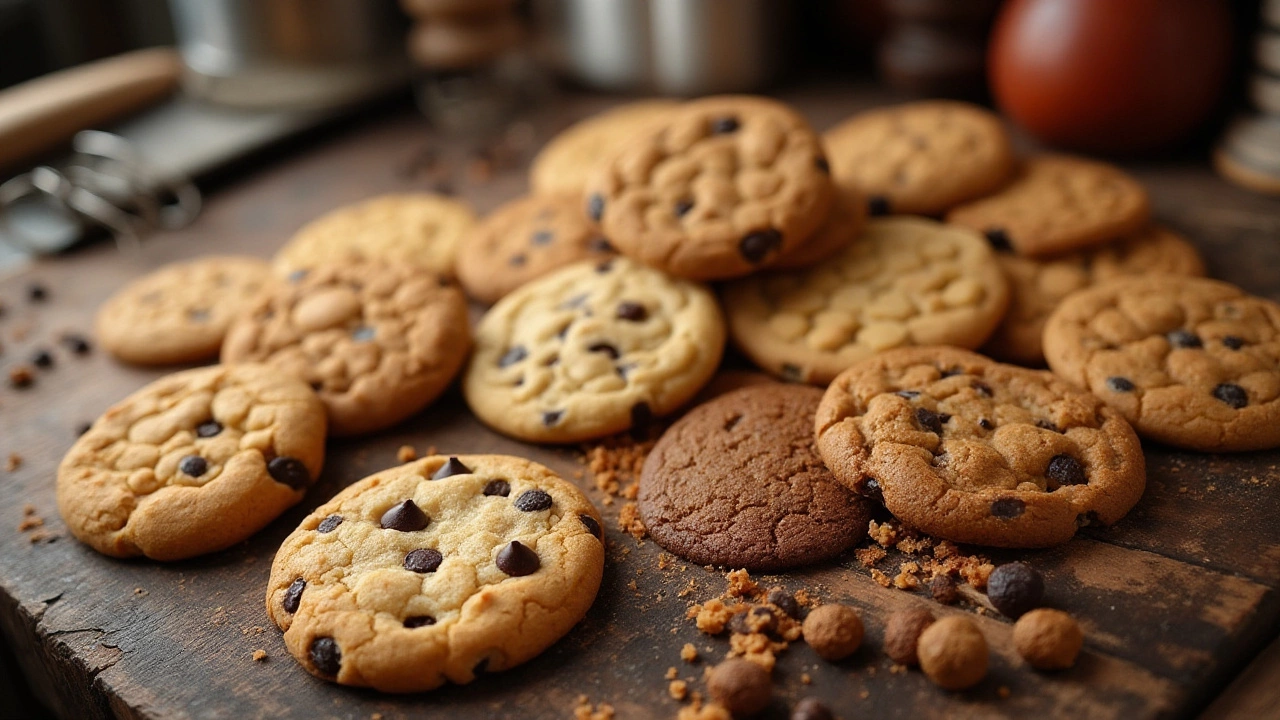
Experimenting with Flavors and Textures
The beauty of baking homemade cookies lies in the endless possibilities for creativity when it comes to flavors and textures. Innovation in the kitchen doesn't have to be reserved for the culinary elite; even the modest cookie presents a canvas ripe for imaginative exploration. The classic chocolate chip cookie has humble beginnings, yet its adaptability has led to numerous varieties, from the addition of spices to swapping out chocolate for other delightful mix-ins such as nuts, dried fruits, or festive candies. The art of flavor pairing can elevate the taste profile of any cookie. According to food scientists, the human palate is evolutionarily inclined to appreciate contrasting sensations, a phenomenon we can exploit in cookie baking.
To begin exploring, consider integrating bold flavors that aren’t traditionally associated with cookies. Herbs such as rosemary or thyme can infuse cookies with an unexpected yet harmonious earthy note. Lavenders, often known for their soothing properties, can transform sweets into something extraordinary. You can incorporate these into your dough like spices: a little goes a long way. Citrus zest, a classic favorite, provides brightness and an aromatic punch unmatched by any other ingredient. If you’re feeling adventurous, a touch of sea salt tapped over the cookie before baking can enhance sweet flavors, accentuating the taste of ingredients like chocolate and caramel. It’s this blend of traditional and avant-garde that can make your cookies an unforgettable experience.
Texture is another critical component that affects how we perceive taste. The differences between a cookie with a crispy edge and a chewy center compared to one that’s uniformly tender or crunchy cater to different preferences and occasions. Achieving these textures boils down to controlling moisture and fat content in your dough. If you’re aiming for a chewy cookie, adding a touch of molasses or substituting some granulated sugar with brown sugar can provide the desired result. Switching up your fats – try using browned butter for a nutty depth or cream cheese for a swoon-worthy softness – can also play a part in texture transformation.
"In baking, balance is key, but daring to mix unusual flavors can lead you to a delightful discovery," suggests renowned pastry chef, Dominique Ansel. Leveraging creative instincts doesn't mean abandoning tradition; it means embracing it from a fresh perspective.Nuts provide crunch while oats add hearty chewiness, each time leading to something unique. Such experimentation with different textures complements the gustatory journey, offering delightful surprises with every bite.
Don’t forget the power of color and presentation. Altering the visual appeal of cookies can also significantly influence taste perception. Colors not only serve as a tool for decoration but can lead to perceived flavor differences. The classic sugar cookie, with a splash of food coloring or natural alternatives such as beet or spinach extracts, can become holiday-appropriate with a festive charm. Consider fun and unexpected shapes catering to themes relevant to seasons, celebrations, or personal interests. Inviting opportunity for people of all ages to engage with the cookie-making process rounds off the experience beautifully. Whether it’s a guessing game with mystery spices or a sensory extravaganza from unique textures, your kitchen becomes not just a workplace but a playground of joy.

